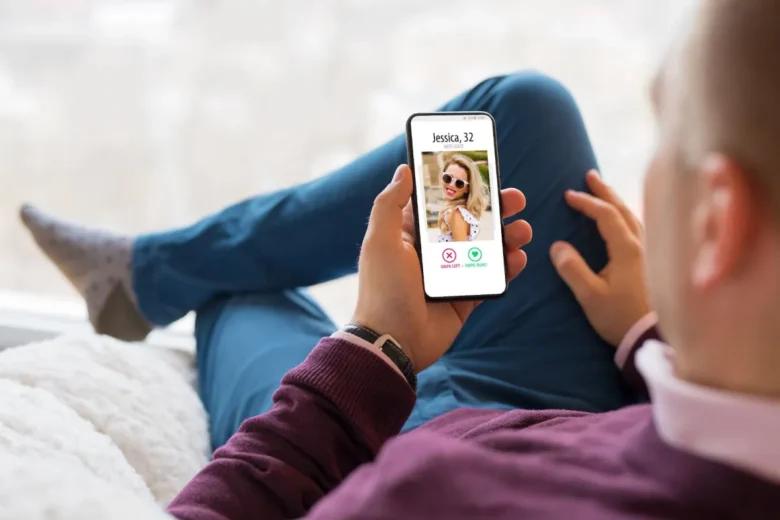In the search for romantic connections, the landscape has shifted dramatically with the advent of digital dating solutions. Now, a plethora of hookup apps offer a platform for casual encounters and no-strings-attached relationships, fulfilling the evolving needs of a dynamic dating population. They promise a quick and convenient way to meet potential partners, tailored to users who might prioritize different aspects of romance and connection.
This digital transformation raises questions about the effectiveness of such applications in cultivating deeper connections beyond physical attraction. While they undoubtedly provide an expansive pool from which to select, the algorithms and user experience design might lead to a shift in how relationships are formed and developed.
Understanding the impact of these platforms on the romantic scene is essential, as they now play a significant, if not dominant role, in how you might find love or companionship in the modern era.
Key Takeaways
- HookUp Apps are redefining how connections are initiated.
- These platforms might influence the trajectory of relationship formation.
- The effectiveness of finding long-term companionship through apps is under scrutiny.
Evolving Patterns of Connection

In the landscape of modern romance, your experiences of finding love have been profoundly influenced by technology, altering connection patterns from past to present.
Historical Context of Romance and Technology
Historically, your ways of finding love were substantially limited by geography and social circles. Personal ads in newspapers were an early iteration of this technological influence in romance. They allowed you to extend your reach beyond your immediate environment, heralding a shift in how connections formed.
Role of Hookup Apps in Modern Romance
Today, hookup apps have taken center stage in your romantic encounters. They use sophisticated algorithms to suggest potential matches, often based on location, interests, and a wide range of preferences. For example, apps like Tinder facilitate over 26 million matches a day, vastly expanding your romantic horizons and shifting your focus towards immediate, visual appeal in the selection process.
Comparison to Traditional Dating Practices
Traditional dating practices typically involved longer courtships and more in-depth interactions before a relationship commenced. In contrast, hookup apps have popularized more efficient, albeit sometimes superficial, methods for you to assess compatibility. This shift often results in faster-paced connections that might prioritize physical attraction over emotional intimacy initially.
Impact on Relationship Dynamics

Source: washingtoncitypaper.com
Hookup apps have drastically reshaped the way you establish communication and intimacy in relationships, provided a mix of success stories and negative outcomes, and influenced the statistical trends in relationship longevity.
Influence on Communication and Intimacy
Hookup apps have changed the way you communicate with potential partners. Once reliant on face-to-face interaction, now a swipe right might be the first step in expressing interest. As detailed in Discover Magazine, the ease of swiping can lead to more superficial interactions, which may affect the development of deeper intimacy.
Success Stories Versus Negative Outcomes
While numerous couples have found meaningful connections through dating apps, it’s important to acknowledge not all experiences are positive. Success stories exist—some people have found lifelong partners on dating apps, with a notable percentage leading to marriage. On the flip side, hookup culture also leads to experiences that do not result in long-term bonds, and these instances are important to consider when examining the impact of dating apps.
Statistics and Trends in Relationship Longevity
Dating apps can facilitate the initiation of relationships, but the question of longevity comes into play. Are these connections built to last? Research, including statistics from dating apps, indicate a variety of outcomes, from brief encounters to long-term relationships. The swiping mechanics and the volume of choices might influence the trend toward more casual and short-term interactions.

Conclusion
You live in an era where technology shapes social interactions, including the sphere of romance. Dating apps have become a fixture in today’s culture, shifting norms around how relationships start. Through the screen, you access a broader pool of potential partners, a convenience aligned with the pace of modern life. The influence of these platforms extends to expectations and attitudes towards romance, with some users finding more diversified ways to connect, while others experience the reduction of dating to a swipe.
The data suggests that people who meet through dating apps may establish intentions for long-term connections, challenging the stereotype that these platforms only serve short-term liaisons. However, the effectiveness of dating apps in fostering long-lasting romance hinges on mindful usage and clear communication of individual desires. Remember, the digital tool is as constructive in finding love as the hands that wield it. Your approach to these platforms can define your experience—be it fleeting or deep-rooted connections.

